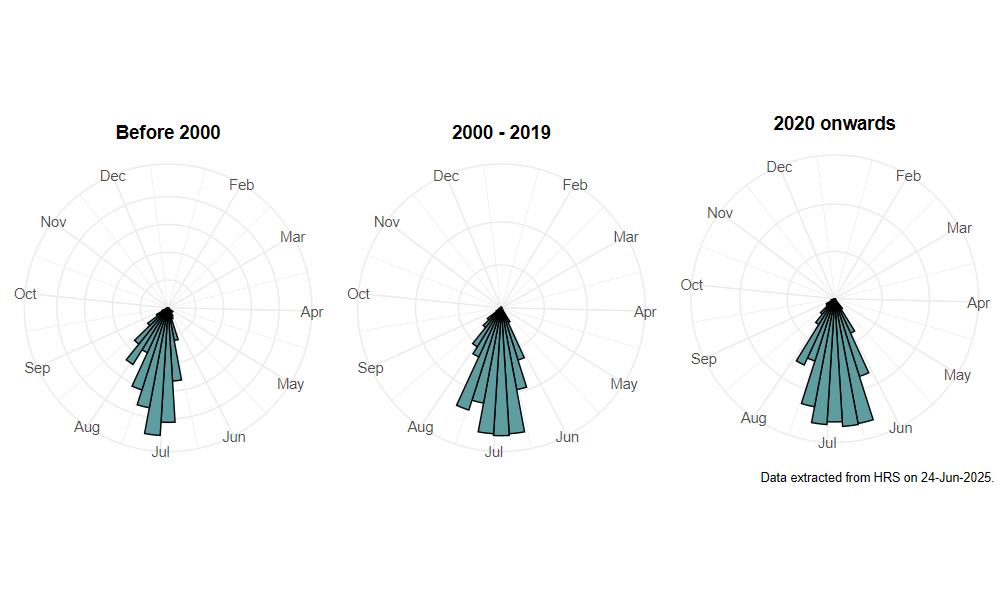Leucozona laternaria (Müller, 1776)
Identification
Identification difficulty = 1. ![]()
![]() according to Ball & Morris, 20241
according to Ball & Morris, 20241
Synonymy
Syrphus laternarius Mueller in Coe(1953)2.
Biology
The larva is associated with Cavariella aphids on white umbels. Its habits and requirements appear to be very similar to L. glaucia and the two are often found together on the same flowers.
Flight period
The following plots show the number of unique records per week excluding those reported to be of immature stages.

Distribution
Like L. glaucia, this species is widely distributed in well-wooded lowland areas throughout Britain, and the two are often found together. Despite showing a similar gap in its distribution in eastern England, this is a more eastern species than L. glaucia, and is much less frequent in South Wales and the south-west peninsula.

Trends
The following plots show the Frescalo TFactor vs year and a map of the rescaled frequency (all records) for the species.